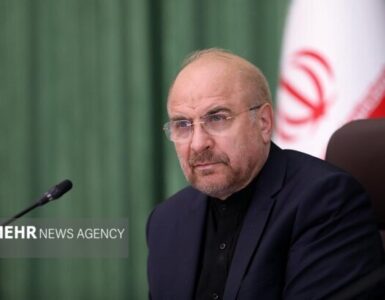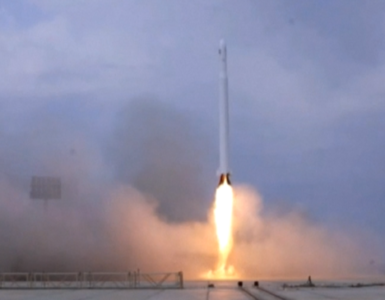On Wednesday, Colonial Pipeline said it had restarted operations, but the panic buying is an important warning with a long history.
Nothing seems to scare Americans more than the fear of running out of gas. As a college student put it in Virginia, where at least 8% of stations are shut down and the governor has declared a state of emergency, “There’s no gas, and people are getting frustrated.” As she waited 45 minutes to tank up, she watched the tension grow. “People are getting into shouting matches,” she said.
We’ve seen this dance before. If you are of a certain age, you surely recall sitting in the back of your family’s station wagon (with no seatbelts of course) waiting hours on end in the 1970s to get a gallon of gas.
Why the deep-seated fear? At one level, Americans love their cars — they are a sign of freedom and the open road. At another, we created a suburban landscape that depends on driving everywhere. Americans drive more miles and do so alone more than citizens of any other country.
And amid the pandemic, today, Americans have even more desire to take to the road. The postponement of family get togethers and the reduction in air travel has led to ever greater desires to travel by car. Gas prices always go up in the summer. Now the idea that long anticipated travel might be further delayed or interrupted feels intolerable.
But the fear comes from something else, something deeper. In the 1970s, like today, there was a fundamental mistrust of government. The Vietnam War and Watergate made Americans mistrustful of their leaders, a situation made worse when Jimmy Carter, who ran on a campaign of his honesty, seemed unable to deliver on his promise to save Americans from the energy crisis.
Today, too, there is deep distrust of government, made worse by partisan divides. That was clear in the pandemic, as it is too with the vaccine.
The fears that we can’t count on our leaders to deliver a basic good magnifies any slight shortage.
The first “oil shock” came in 1973 in response to the embargo during the 1973 Israeli-Arab War, when Organization of the Petroleum Exporting Countries (OPEC) cut off exports to the United States in retaliation of the country’s support of Israel. Prices at the pump doubled, and then quadrupled. Just as scary to Americans were the “Sorry, No Gas Signs,” that popped up at service stations everywhere.
What seemed to scare Americans most was the suddenness of the crisis. “An energy Pearl Harbor” was how one commentator put it. As the pollster Daniel Yankelovich told former President Richard Nixon, who then occupied the White House, “No issue has such a potential for producing social instability of the magnitude of the depression as does the energy crisis. This crisis entails a radical change … Their lives will be disrupted and altered at the gut level.”
Residents of a small rural village in eastern North Carolina wrote to Nixon, “People are spending every waking hour worrying over the gasoline situation.” Even as the Watergate scandal was unfolding, polls reported that citizens cared far more about the energy shortage than they did about presidential wrongdoing.
The story replayed itself in the summer of 1979 during the second oil shock when the Iranian Revolution reduced supply. As soon as the first shortage appeared, panic buying set in, with the average sale falling from eight gallons to three. The California Energy Commissioner reported chaos: “People have got into fights. Gasoline station attendants have been hit with pipes.” “If there was more order and less fear, we’d be able to get by,” he said. “But people are freaking out.”
In Levittown, Pennsylvania, local residents staged a full-on riot, chanting, “More gas! More gas!” outside of gas stations as they threw rocks, beer bottles, and cans at the local police and set two cars on fire. “There is a panic at the pumps,” said a Miami service station owner. “It’s the worst it’s ever been.” “I had to step between two people,” said another owner, in New York. “After waiting on line they got into an argument right at the pumps, about who was cutting in front.” At a local station in Brooklyn, a man shot and killed another man in front of his pregnant wife.
In both cases, like today, Americans’ fear turned a small interruption in supply into a major crisis. In truth, the major oil companies were able to shift around distribution in ways that should have minimized the impact in the 1970s. But panic took hold, and the rush to tank up compounded the situation. Despite exhortations to conserve and save, drivers did the opposite. Topping off, as it was called, meant that motorists were carrying nearly a month’s supply of gasoline in their tanks rather than leaving it in the gas pumps.
This current panic seems like it will be short-lived. There is no global shortage of gasoline, and, throughout the pandemic, as a result of a global economic decline, oil prices have fallen.
Still, there is an opportunity here. President Joe Biden of course should seek to offer reassurances and rebuild confidence. Energy Secretary Jennifer Granholm explained, there is no “gasoline shortage.” “Much as there was no cause, say, for hoarding toilet paper at the start of the pandemic, there should be no cause for hoarding gasoline,” she told reporters.
Even more than that, now is the time for politicians and citizens to lean into the future and embrace the coming of the electric vehicle, the building of mass transit and the overall shift away from fossil fuels. The pipeline shutdown should be a “wake-up call,” said Transportation Secretary Pete Buttigieg, to invest “in world-class, modern, and resilient infrastructure.” Until we become less dependent on our gas-guzzling vehicles we will never truly liberate ourselves from our panics at the pump.






